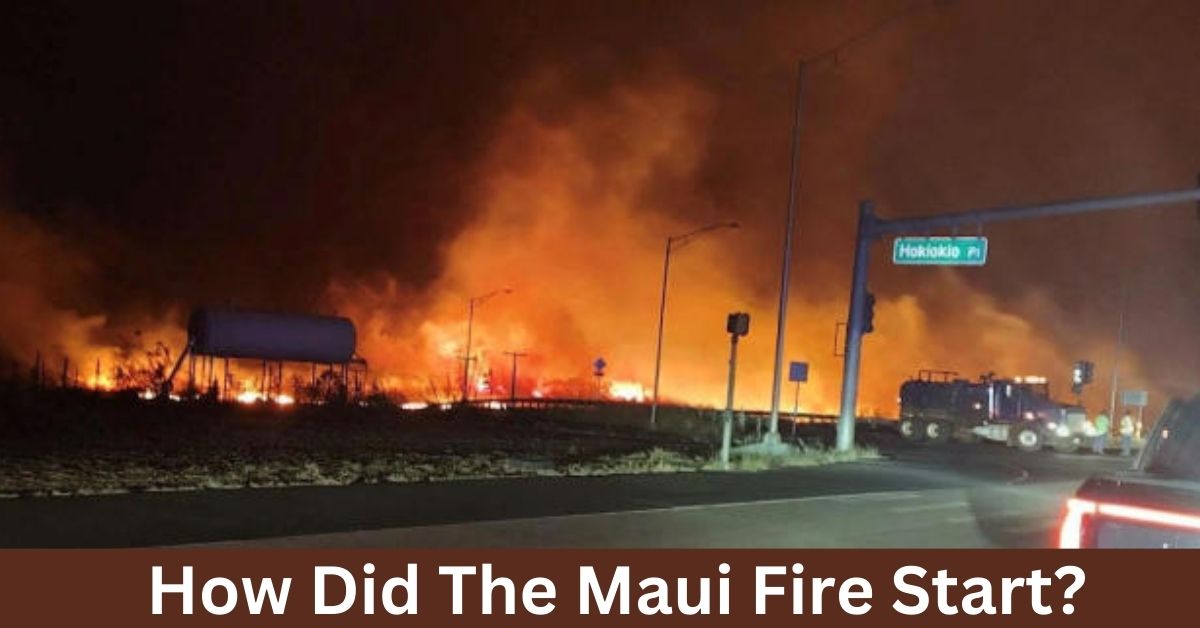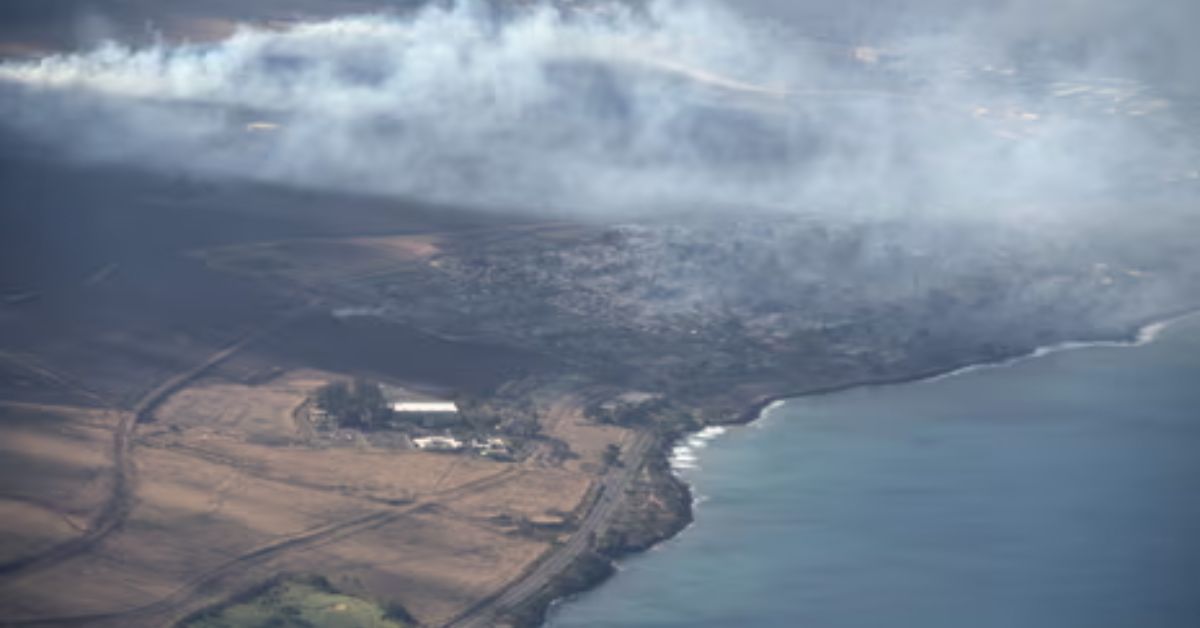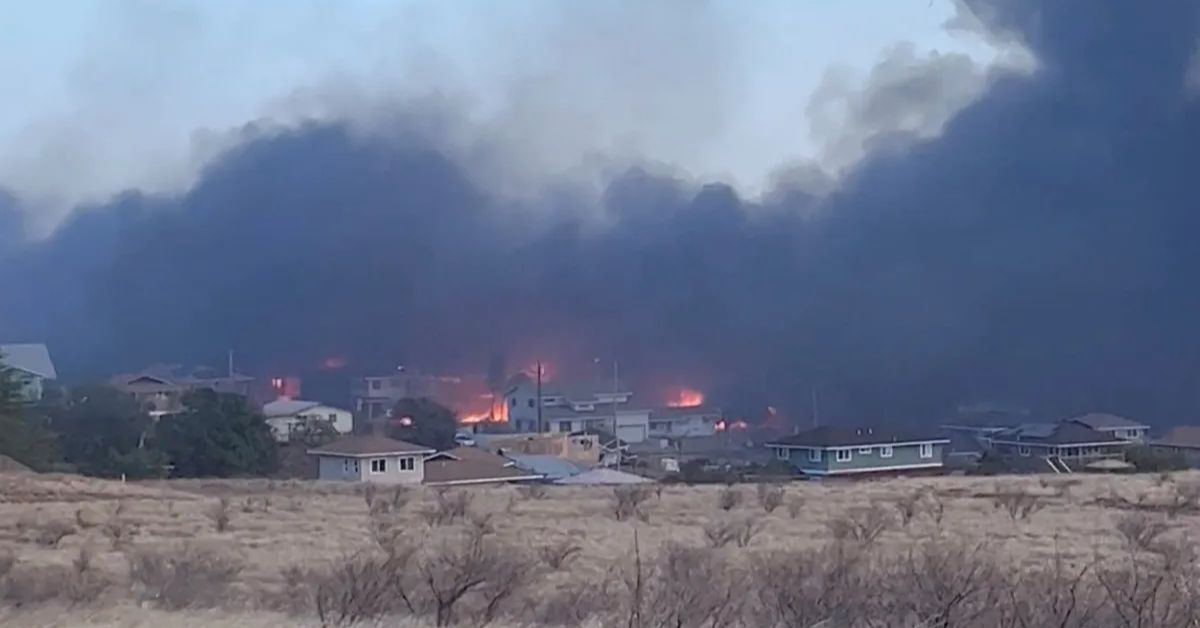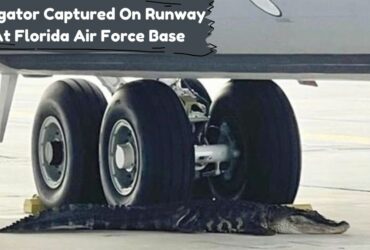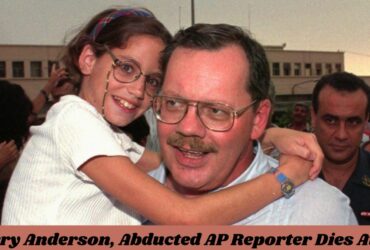Deadly wildfires raging in Hawaii have forced evacuations and knocked out electricity to thousands, fuelled by a combination of land and atmospheric conditions known as “fire weather.” A major fire burned much of the historic town of Lahaina on Maui, forcing some residents to flee into the bay for safety. Maui County reported in a statement Wednesday night that at least 36 individuals were killed in the flames.
The US Coast Guard reported that workers rescued 14 persons who had leapt into the Lahaina harbor to escape the flames. In comments to CBS Honolulu affiliate KGMB-TV, business owner Alan Dickar recounted witnessing businesses “engulfed” in flames on both sides of Front Street, a famous tourist destination.
“There were no fire trucks at that point; I think the fire department was overwhelmed,” Dickar explained to the station. Later, he told CBS News’ Patrick Torphy, “Maui can’t handle this.” Many people have lost their employment as a result of business fires. Many people were displaced from their homes. This will be disastrous for Maui.”
What Caused The Maui Fire?
When the wildfires broke out, much of Hawaii was under a red flag warning for fire danger, but the specific cause of the inferno is still unknown.
“We don’t know what actually ignited the fires, but we were made aware in advance by the National Weather Service that we were in a red flag situation — so that’s dry conditions for a long time, so the fuel, the trees and everything, was dry,” Maj. Gen. Kenneth Hara, commander general of the Hawaii Army National Guard, said at Wednesday’s briefing. That, along with low humidity and high winds, “set the conditions for the wildfires,” he said.
Hurricane Dora, which was moving across the Pacific Ocean hundreds of miles south of the Hawaiian islands, was responsible for the high winds fanning the fires, according to the National Weather Service.
The cyclone, which the Central Pacific cyclone Center categorized as a Category 4 on Wednesday morning, led to severe wind gusts of more than 60 miles per hour that ripped through Maui overnight, knocking out power lines and damaging homes. As wind gusts increased on Tuesday evening, National Guard helicopters activated as part of the state’s emergency response to the wildfires were grounded.
Several #wildfires are burning across parts of Hawaii this week, fueled in part by strong winds from Hurricane Dora passing to the south. @NOAA's GOESWest was tracking the hotspots and smoke from the fires as they burned across parts of Maui and the Big Island yesterday evening.… pic.twitter.com/WzApS2ddTi
— NOAA Satellites (@NOAASatellites) August 9, 2023
Acting Hawaii Gov. Sylvia Luke issued an emergency proclamation enabling the deployment of National Guard troops on Tuesday, and the state of emergency was extended on Wednesday. She warned against “non-essential air travel to Maui.”
⚠️ UPDATE: High Wind & Fire Weather Alerts ⚠️
🌬️ High Wind: 30-45 mph winds, gusts up to 60 mph. Secure property, expect outages & difficult travel.
🔥 Red Flag: High fire danger with rapid spread. NO outdoor burning.
Stay safe & cautious! #HawaiiWeather 🌦️🚫 pic.twitter.com/Ov3KCjsqtl
— NWSHonolulu (@NWSHonolulu) August 8, 2023
The National Weather Service forecast that dangerous wildfire conditions would persist through Wednesday afternoon due to a combination of strong winds and low humidity. As the agency’s Honolulu branch noted in tweet Sunday, significant differences in atmospheric pressure between the hurricane and the air north of Hawaii, formed a pressure gradient over the islands which, when combined with dry conditions, posed a serious threat of fires as well as damaging winds.
Strongest winds in yellows & oranges on map result from significant pressure differences between high & low-pressures. Combined w/ dry conditions, these winds pose a serious fire & damaging wind threat. Stay alert! 🔥☁️
— NWSHonolulu (@NWSHonolulu) August 7, 2023
“While Hurricane Dora passes well south with no direct impacts here, the strong pressure gradient between it & the high pressure to the north creates a threat of damaging winds & fire weather (due to ongoing dry conditions) from early Mon to Wed,” the agency said at the time.
You can see the additional news:
How Do Wildfires Usually Start?
According to the National Park Service, people are responsible for about 85% of wildfires in the United States. Fires started in this manner might occur as a result of leaving campfires unattended, burning debris, utilizing various types of equipment, and inappropriately discarding cigarettes. According to the EPA, intentional acts of arson are another form of human-caused wildfires.
Wildfires are naturally caused by lightning and volcanic activity, though officials caution that lightning strikes are a considerably more common spark. Strong winds, low relative humidity, unstable atmospheric conditions, and thunderstorms all contribute to what meteorologists refer to as “fire weather,” according to Nick Nauslar, a meteorologist and former weather forecaster at the National Oceanic and Atmospheric Administration’s Storm Prediction Center, in a 2018 FAQ published by the agency.
According to NOAA, wildfires can spread quickly in hot, dry, and windy conditions — especially when those conditions occur simultaneously. Most often, lightning strikes a tree and ignites a fire, but strong winds can also spark power lines, which go on to ignite wildfires when there is dry brush or grass in the area. This year’s wildfire season in Canada and across North America has been severe, as warm and dry weather persist and several parts of the continent face record heat and drought as a result of climate change.
Maui Fire officials cautioned this week that “erratic wind, challenging terrain, steep slopes, and dropping humidity, as well as the direction and location of the fire conditions, make it difficult to predict the path and speed of a wildfire,” according to a county advisory published Tuesday. It stated that “fires can start at a far distance from their source” when wind blows embers upward and sparks ignite downwind. “The fire could be a mile or more away, but it could be at your house in a minute or two,” said Fire Assistant Chief Jeff Giesea in a statement included in the advisory. “Burning airborne materials can start fires far from the main body of fire.”
Where Are The Fires In Maui?
The County of Maui stated that fire was already widespread in Lahaina, which is located in West Maui, and that traffic closures were in effect.
ROAD CLOSURES: Multiple Road Closures in Lahaina Town. Do NOT go to Lahaina town https://t.co/MCPU13Pzrr pic.twitter.com/rOdb5HYdoD
— County of Maui (@CountyofMaui) August 9, 2023
On Wednesday, it was also impacting Kula, an inland Upcountry area of the island. Crews were battling brush fires and structural fires in West Maui and Upcountry districts late Tuesday while people were evacuated, according to the county. Follow us on The Current Online for more updates.
